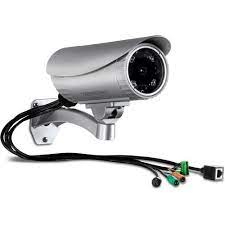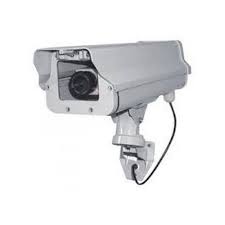In the realm of security and surveillance systems, wired cameras have long been a reliable and effective tool for monitoring and safeguarding various environments. These cameras are connected to a central recording device or monitoring station via physical cables, providing a stable and consistent connection for capturing high-quality video footage.
One of the key advantages of wired cameras is their reliability. Unlike wireless cameras that may experience interference from other electronic devices or signal disruptions, wired cameras offer a secure and uninterrupted connection for continuous surveillance. This makes them ideal for critical applications where a stable video feed is essential.
Additionally, wired cameras are known for their superior image quality. By transmitting video signals through cables, these cameras can deliver clear and sharp footage with high resolution, ensuring that every detail is captured accurately. This makes wired cameras particularly suitable for scenarios where detailed imagery is crucial, such as identifying individuals or monitoring specific areas.
Another benefit of wired cameras is their consistent power source. Since they are typically connected to a power outlet via cables, wired cameras do not rely on batteries or solar panels for operation. This ensures continuous power supply to the camera, eliminating the need for frequent battery changes or recharging sessions.
While the installation of wired cameras may require more effort due to the need for cable routing, many users find the reliability and performance benefits outweigh this initial setup complexity. With proper planning and installation, wired cameras can offer a robust surveillance solution that meets the security needs of various settings, including homes, businesses, public spaces, and industrial facilities.
In conclusion, wired cameras remain a popular choice in the realm of security and surveillance systems due to their reliability, superior image quality, and consistent power source. Whether used for monitoring residential properties or securing commercial establishments, these cameras continue to be valued for their ability to provide continuous and high-definition video footage for enhanced security measures.
Understanding Wired Camera Systems: Key Differences, Benefits, Installation, Limitations, Suitable Environments, and Integration with Security and Smart Home Devices
- How do wired cameras differ from wireless cameras?
- What are the advantages of using wired cameras?
- What is the installation process like for wired cameras?
- Are there any drawbacks to using wired cameras?
- What types of environments are suitable for using wired cameras?
- Can I integrate wired camera systems with other security devices or smart home systems?
How do wired cameras differ from wireless cameras?
One frequently asked question regarding wired cameras is how they differ from wireless cameras. The primary distinction lies in the method of connection. Wired cameras are physically connected to a recording device or monitoring station via cables, ensuring a stable and uninterrupted video feed. In contrast, wireless cameras transmit video signals over Wi-Fi networks, making them easier to install without the need for extensive cabling. While wired cameras offer a reliable connection and superior image quality, wireless cameras provide flexibility and convenience in terms of placement and mobility. Understanding these differences can help users choose the most suitable surveillance solution based on their specific needs and preferences.
What are the advantages of using wired cameras?
When it comes to security and surveillance systems, the advantages of using wired cameras are plentiful. Wired cameras offer a reliable and stable connection, ensuring uninterrupted monitoring without the risk of signal interference or disruptions. They provide superior image quality with high resolution, capturing clear and detailed footage for accurate identification and monitoring. Additionally, wired cameras have a consistent power source through their connection to a power outlet, eliminating the need for frequent battery changes or recharging. While the installation of wired cameras may require initial setup effort for cable routing, their reliability and performance benefits make them a preferred choice for various security applications where continuous surveillance is essential.
What is the installation process like for wired cameras?
When it comes to the installation process for wired cameras, there are a few key steps to consider to ensure a successful setup. Firstly, it is essential to determine the optimal camera placement for maximum coverage and surveillance effectiveness. This involves identifying strategic locations that offer clear views of the areas to be monitored while ensuring minimal obstructions.
Next, the cables need to be carefully routed from the camera location to the central recording device or monitoring station. This may involve drilling holes for cable passage, running cables along walls or ceilings, and securing them in place to prevent damage or tampering.
Once the cables are in place, the wired camera can be securely mounted at the chosen location using appropriate mounting hardware. It is crucial to ensure that the camera is positioned correctly and securely fixed to withstand environmental factors and potential tampering attempts.
Finally, the cables must be connected to the recording device or monitoring station following manufacturer instructions. This typically involves plugging in power cables, video cables, and any additional connections required for data transmission or remote access.
Overall, while the installation process for wired cameras may require some planning and effort, following these steps diligently can result in a reliable surveillance system that offers high-quality video footage and enhanced security measures.
Are there any drawbacks to using wired cameras?
While wired cameras offer numerous benefits in terms of reliability and image quality, there are some drawbacks to consider when using them. One of the main disadvantages of wired cameras is the installation process, which can be more complex and labor-intensive compared to wireless cameras. Routing cables through walls or ceilings may require professional assistance and could result in additional time and cost. Additionally, the presence of visible cables may affect the aesthetics of the surveillance setup, especially in environments where a discreet appearance is desired. Another drawback is that wired cameras are limited by the length of the cables, which can restrict their placement options and coverage area. Despite these drawbacks, many users find that the performance and stability offered by wired cameras outweigh these limitations, making them a preferred choice for certain security applications.
What types of environments are suitable for using wired cameras?
Wired cameras are well-suited for a variety of environments where consistent and reliable surveillance is essential. These cameras are particularly ideal for indoor settings such as homes, offices, retail stores, and warehouses, where a stable connection and high-quality video feed are crucial for monitoring activities and ensuring security. Additionally, wired cameras are commonly used in outdoor environments like parking lots, industrial facilities, and construction sites, where they can withstand harsh weather conditions and provide continuous surveillance without signal interference. Overall, wired cameras are recommended for environments that require dependable performance, clear image quality, and uninterrupted power supply to maintain effective security monitoring.
Can I integrate wired camera systems with other security devices or smart home systems?
One frequently asked question regarding wired camera systems is whether they can be integrated with other security devices or smart home systems. The answer is yes, wired camera systems are often designed to be compatible with a wide range of security devices and smart home technologies. By leveraging integration capabilities, users can create a comprehensive security ecosystem that includes features such as motion sensors, alarms, access control systems, and smart home automation. This seamless integration allows for centralized monitoring and control of all connected devices, enhancing overall security and convenience for users seeking a holistic approach to their security needs.



